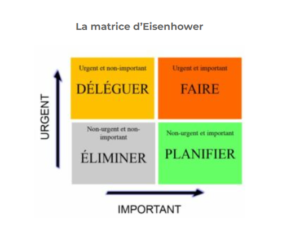1. WHAT IS MENTAL LOAD ?
Mental workload is a concept that is increasingly present in our modern society. It is an invisible burden that weighs on the shoulders of many people, especially women, and has a significant impact on their mental and emotional well-being.
In this article, we will explore what mental workload is, how it manifests itself in different aspects of daily life, and the consequences it can have on individuals and relationships. We will also discuss ways to recognize and manage mental load in order to restore a healthy balance in our lives.
Mental load refers to the sum :
Unpaid mental + emotional tasks
This mental load mainly affects women, although it can also affect men. It is an invisible weight that includes different daily tasks :
- Professional mental load
- Personal mental Load
- Emotional mental load
Professional mental load
- A mental "to do list"
Mental workload is often underestimated and overlooked, which can lead to chronic stress, burnout and deteriorating mental health.
Send an email while being in a meeting, stop in your work to answer a collaborator and resume later, the files to be returned…
In other words, the mental load at work represents the amount of information that needs to be processed, the different tasks to be performed, the decisions, the interactions, etc.
For most of us, we have a certain mental load at work that is more or less developed. However, if this mental load at work becomes too great, there is a risk of mental overload.

Attention
Professional mental overload is an additional risk of Burn out
Personal mental workload
In personal mental workload, we mainly find mental workload related to managing the home and family. This part of the mental load still mainly affects women, although men can also be affected!
This mental load consists in having to think about everything outside work: household chores, children, leisure activities…
Emotional mental workload
Now that we’ve defined professional and personal mental workloads, let’s take a look at emotional mental workload.
Emotional mental workload is the accumulation of many different emotions.
This mental charge is also called “Emotional charge”
2. CONSEQUENCES OF MENTAL LOAD
Mental workload has serious repercussions on the well-being of individuals.
Chronic stress
Anxiety
Depression
Exhaustion
Among the most common signs of mental overload, we also find :
- Great physical and mental fatigue
- Sleep disorder: difficulty falling asleep or regular nocturnal awakenings.
- Poor management of emotions: great irritability or sadness for example
- Memory problems: Forgetting tasks, files, etc. demonstrates significant cognitive overload.
- Greater anxiety with difficulty managing it
- Tensions with other people (collaborators, relatives, etc.)
- Lower efficiency at work
3. HOW TO LOWER THE MENTAL WORKLOAD ?
There are different tips that can reduce the mental load on a daily basis. Let’s take a look at some of these tips together :
Become aware of our mental load :
Yes, here is the very first step. Become aware of the mental load. It is not that simple. The mental load is something invisible, which is part of our daily life.
So, in order to really become aware of it, start by listing everything you do during the day. However, not only what you do, but also the tasks you think about during the day!
Practice assertiveness :
Do you tend to say yes when asked for help?
You have a lot of difficulty saying no, for fear of disappointing, of being rejected…
I have bad news, you can’t please everyone by constantly adding tasks that add to your mental load. Even if it may seem difficult and go against your habits, assertiveness will allow you to enter a new virtuous circle.
Remember that saying yes all the time and to everyone will only serve to make you feel overwhelmed, which can lead you to have no time for yourself at all and end up breaking down.
Finally, set yourself to define clear and healthy limits that will allow you to preserve your energy and your mental load.
The dialogue !
It is important to communicate and share, so as not to carry all the weight on our shoulders.
Discuss with your loved ones, your colleagues about the mental load you feel. Express your needs and do not hesitate to ask them for help if necessary.
Without communication, others are unaware of the impact of these many tasks on you. Discussing it with them will allow them to become aware of it and better support you.
Which brings us to the next point :
Delegate
Easy to say, but not necessarily easy to do!
We tend to think that we have to do everything on our own, but this puts a heavy mental burden on us.
First, ask yourself to identify the tasks that can be delegated. It is suitable for everyday tasks as well as for household tasks.
Remember that the other person is not in your head. If you wait for help but don’t ask for it, the other person may not see your charge.
Take care :
It is important to take time for yourself every day.
Take time each day to relax and rejuvenate.
This can include activities such as meditation, yoga, reading, or any other activity that calms you down and allows you to center yourself. Self-care builds your mental resilience and helps you deal with challenges more effectively.
And most importantly, don’t blame yourself! You have the right to make time for yourself.

Sort out your tasks
Maybe you feel that all tasks are urgent and important. Nevertheless, it is not the case. It’s important to take the time to sort out what you need to do so you know where to start.
An urgent task is not necessarily important or vice versa.
There is a very practical tool in order to sort the different tasks to be carried out :

Use modern tools to get organized
Today there are many applications that allow you to manage your time and your tasks. Do not hesitate to take applications from to do list, calendars or others.
Seek help from a therapist
When it becomes too difficult to help yourself, do not hesitate to ask for help. If you feel that your emotions are starting to get too big and you can’t manage them at all, it may be time to see a psychotherapist.
The psychotherapist specializing in CBT can advise you on how to reduce your mental load, he can also help you manage your emotions (through different emotional management tools), but also to work on the dysfunctional thoughts that may be present.

4. CONCLUSION
Mental load is an invisible burden that can have a huge impact on our mental and emotional well-being.
By understanding its manifestations in our daily lives, we can begin to recognize and deal with it proactively.
Open communication, sharing responsibilities and taking care of yourself are key to lightening the mental load!
As you have seen, there are many ways to reduce the mental load. It is important to start thinking about yourself and taking care of yourself !

